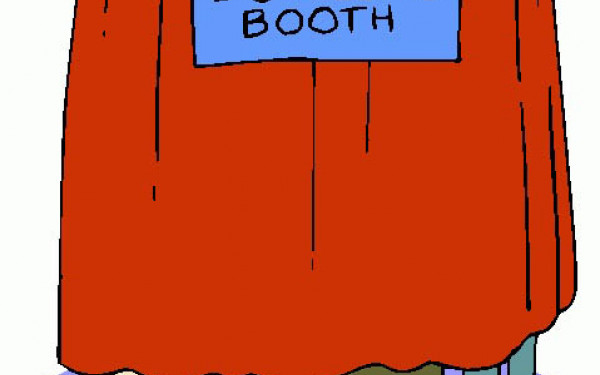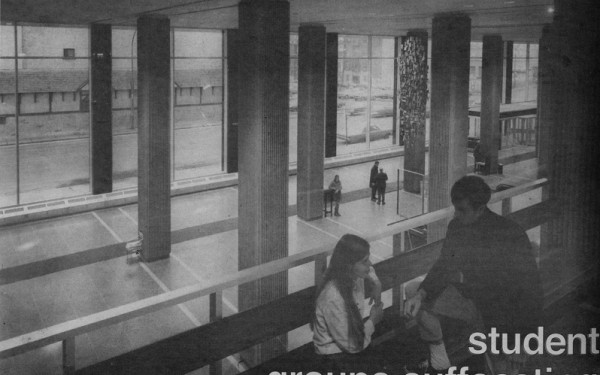It’s Not Clean: Chief Electoral Officer
Referendum Results to Be Unsure Because of Contestation
Before a single vote was cast in this week’s Concordia Student Union referendum, a nine-page contestation detailing the alleged widespread abuses of electoral law over the one-week campaign fell on the Chief Electoral Officer’s desk.
The contestation, written by CSU councilor Lex Gill, accuses the student union executive who ran the Yes to the Student Centre Committee of abusing his position, the student union’s resources, violating its postering policy, misrepresenting facts and overspending its budget.
“It’s not clean,” said CEO Oliver Cohen about the referendum campaign to approve an eventual $2.50 per credit fee levy. “I don’t know what to call it yet.”
With “Throw This Referendum Out” written across its cover page, the contestation called for the CEO to annul the referendum being held from Nov. 23 to 25.
“There is no regulated and legitimate No committee, so it makes it tough to regulate what the No side is doing, quite unfortunately. There are a lot of policies and rules that have been broken by that side and they sabotaged us at certain points,” said CSU VP External & Projects Adrien Severyns. “I guess this could give way to contestations from our side as well.”
When asked to list some of the violations by the unofficial No committees, Severyns did not provide examples.
“You will see the incidents from them in my contestations, I can’t list them all, but it’s mostly the postering policy and misinformation from them,” he said. “It’s a lot easier to take something down than to build it.”
Calling the unofficial groups who formed against the student union building “vigilante campaigning,” Cohen said he was disappointed by the lack of mass participation until the last two days of the campaign.
It was also only at the 11th hour that many became aware of the violations.
According to her contestation, Gill stated that the Yes committee violated the student union’s postering limit of two posters per board, and continued by stating that posters were used in non-designated spaces.
The Link observed a poster board with 11 “Vote Yes” posters and found posters in a glass case near the People’s Potato.
“We didn’t break any policies; those policies are set by the CSU, so they are well known to us,”
–Adrien Severyns
CSU VP External & Projects
When asked about the allegations, Severyns could not respond to specifics because he had not seen the contestation, but he was confident in his campaign.
“We ran a very clean byelection, there is no doubt about that,” Severyns said. “We didn’t break any policies; those policies are set by the CSU, so they are well known to us.”
Gill also wrote that the Yes committee used resources to which it had privileged access, including the space where it built a K’Nex structure on the second floor of the Hall building. That space has to be rented from the university administration, and is not a space that is typically open to students free of charge.
Gill also charged that the student union executive abused its position by sending e-mails to the private e-mail inboxes of the heads of CSU clubs, instructing them to send a message from the CSU to its members. Examples of these e-mails were included in Gill’s contestation—she is an überculture executive.
Until The Link contacted the CEO about the violation, a direct link in the most prominent location on the CSU’s website directed visitors to the Yes committee website. The link was promptly taken down.
Gill also wrote, and The Link verified, that CSU Campaigns Coordinator Daniel Shakibaian, an employee of the CSU, was being paid by the student union to campaign during the referendum for the Yes Committee.
According to CSU referendum bylaws, both committees must have access to the same resources during the campaign.
“I guess the damage has been done somewhat; all I can do now is perhaps enact sanctions if I find proof of wrongdoing,” said Cohen. “We try to enforce rules as well as we can, but these days, it is really hard to monitor
people.”
This article originally appeared in Volume 31, Issue 15, published November 23, 2010.

__700_716_90.jpg)
_600_832_s.png)



__600_375_90_s_c1.jpg)